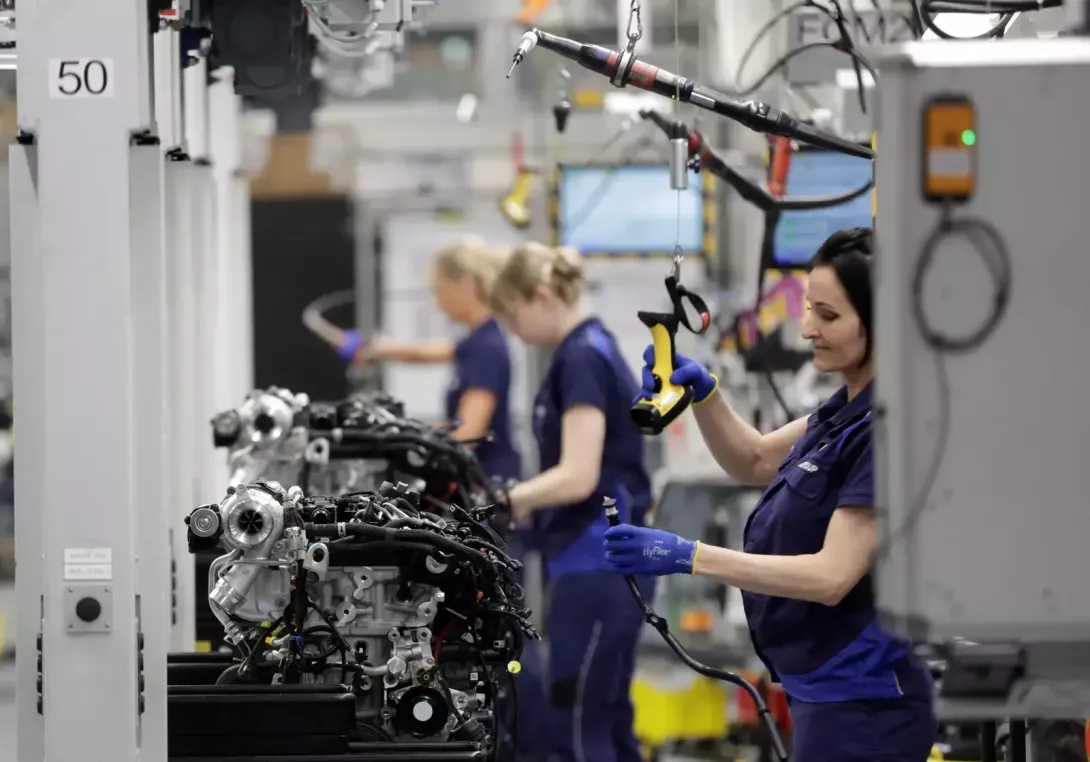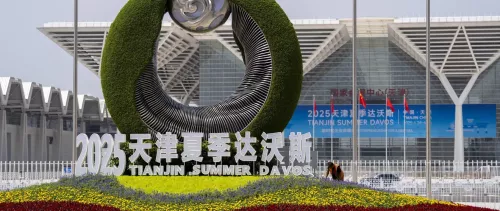
BMW uses a digital twin to allow international collaboration between its factories. Image: REUTERS/Leonhard Foeger
- Digital twins – virtual representations of real-world objects or systems – allow manufacturers to run tests and learn as if they are testing in a real-world scenario.
- Manufacturers currently focus much of their use of digital twins on improving production processes or sustainability.
- As digital twins mature, manufacturers should incorporate production and sustainability metrics into a single digital twin to obtain the full benefits of the model.
Although not a new technology, digital twins – virtual representations of real-world objects or systems – are crucial in bolstering the Fourth Industrial Revolution. Ranging in scale from a car to a city, constant real-time data and feedback loops ensure digital twins are accurate virtual representations. This allows manufacturers to use them and learn as if they are testing in the real world.
Currently, manufacturers take advantage of digital twins for a wide variety of purposes with the most common focusing on improving the production process or sustainability. Production digital twins can improve manufacturing through cost savings and improved efficiency. These often have positive yet overlooked side effects. The newly efficient operations tend to reduce energy and water consumption, waste and emissions, leading to a smaller environmental footprint. Similarly, while not the primary goal, sustainability-focused digital twins can lead to cost savings and improve efficiency.
Viewing production digital twins and sustainability-focused digital twins as separate entities is a missed opportunity for manufacturers. Failing to incorporate all aspects of production creates an incomplete model. As digital twins mature, manufacturers should incorporate production and sustainability metrics into a single digital twin to obtain the full benefits of the model.
What is a digital twin?
A digital twin can be described as an information mirror model or an exact 3D virtual representation of real-world systems. Digital twins often simulate how a “twin” will fare in a wide range of scenarios, identify operation bottlenecks and compare expected results with real-time production.
Digital twins receive data from various sensors monitoring the real-world twin. In a manufacturing setting, for example, sensors can measure a wide range of information, such as performance outputs (number of holes drilled, energy consumed and so forth) or environmental information (weather conditions, for example). This information is then analysed with the help of machine learning and artificial intelligence (AI).

The beauty of the digital twin system is it allows for continuous improvement: the real twin feeds data to the digital twin, and the digital twin identifies areas for improvement and provides solutions. These suggestions are adapted and the cycle begins again. The Hitachi Digital Twin Solution is a prime example: a digital twin is created for each machine at its manufacturing site and receives a constant flow of data. The digital twin allows the factory to identify problems early and often, preventing more significant issues from arising.
Another adaptor of the digital twin is the automotive industry. BMW has digitized many of its factories and created the BMW iFACTORY, a digital tool that looks similar to Google Street View. According to BMW, this digital twin promotes international collaboration between factories. The production team uses the BMW iFactory to visit any factory worldwide to gain quantitative data from the factory floor and compare best practices.
Digital twins in manufacturing: production vs sustainability
Many manufacturers worldwide use digital twins to improve production efficiency. A recent white paper by the World Economic Forum’s Global Lighthouse Network (GLN) highlights factories leading the way in digital transformations. Many of these factories emphasize process-focused digital twins as critical enablers for success.
One example is the LG Electronics factory in Changwon, Korea. The factory transformed its assembly line visual simulation tool into a digital twin by continuously integrating real-time production data into the system with updates occurring every 30 seconds. As a result, they improved productivity by 17%, product quality by 70%, and reduced energy consumption by 30%.
Another example is Procter & Gamble’s factory in Guangzhou, China. The factory employed a digital twin to improve warehouse operations. Within a three-year period, the digital twin led to 99.9% of deliveries on time, a 30% reduction in inventory and a 15% reduction in logistic costs.
These examples and many other production digital twins have overlooked sustainability as a side effect. The newly efficient operation reduces energy consumption and waste, leading to a smaller environmental footprint. As mentioned above, the LG Electronics factory minimized energy consumption by 30%, while the Procter and Gamble factory reduced inventory by 30%. These mark a drastic reduction in resource consumption, making its processes more sustainable.
In an interview with the World Economic Forum in 2022, Peter Herweck, the CEO of Schneider Electric, stated: “Effectively integrated digitalization and sustainability drive deeper, broader change when they are aligned.”
Moving forward: a singular digital twin
How Western Digital achieved a major sustainability impact Image: World Economic Forum Global Lighthouse Network 2022
Although small in numbers, the dual-focused digital twin is not an idea of the future. Western Digital in Penang, Malaysia, has used digital twins to create a “lights-out automation” system. “Lights out manufacturing”, where a system operates without lights, transforms the entire process by integrating sustainability and efficiency goals. While the site has grown with a compound annual growth rate (CAGR) of 43% in the last four years, the lights-out automation has reduced energy consumption by 41%.
Sustainability and production efficiency reinforce one another. Failing to incorporate all aspects into the digital twins model creates an incomplete digital picture and prevents continuous improvement. If sustainability or efficiency is viewed as a byproduct rather than a result, the information is not fed into the model. As a result, it is impossible to build off these insights to facilitate further improvement. As digital twins mature, sustainability and production efficiency should be viewed as integrated components of a complex system or as core components of the industrial metaverse.
Veronique Adenis, Project Fellow, Advanced Manufacturing and Supply Chains, World Economic Forum, contributed to this article.


